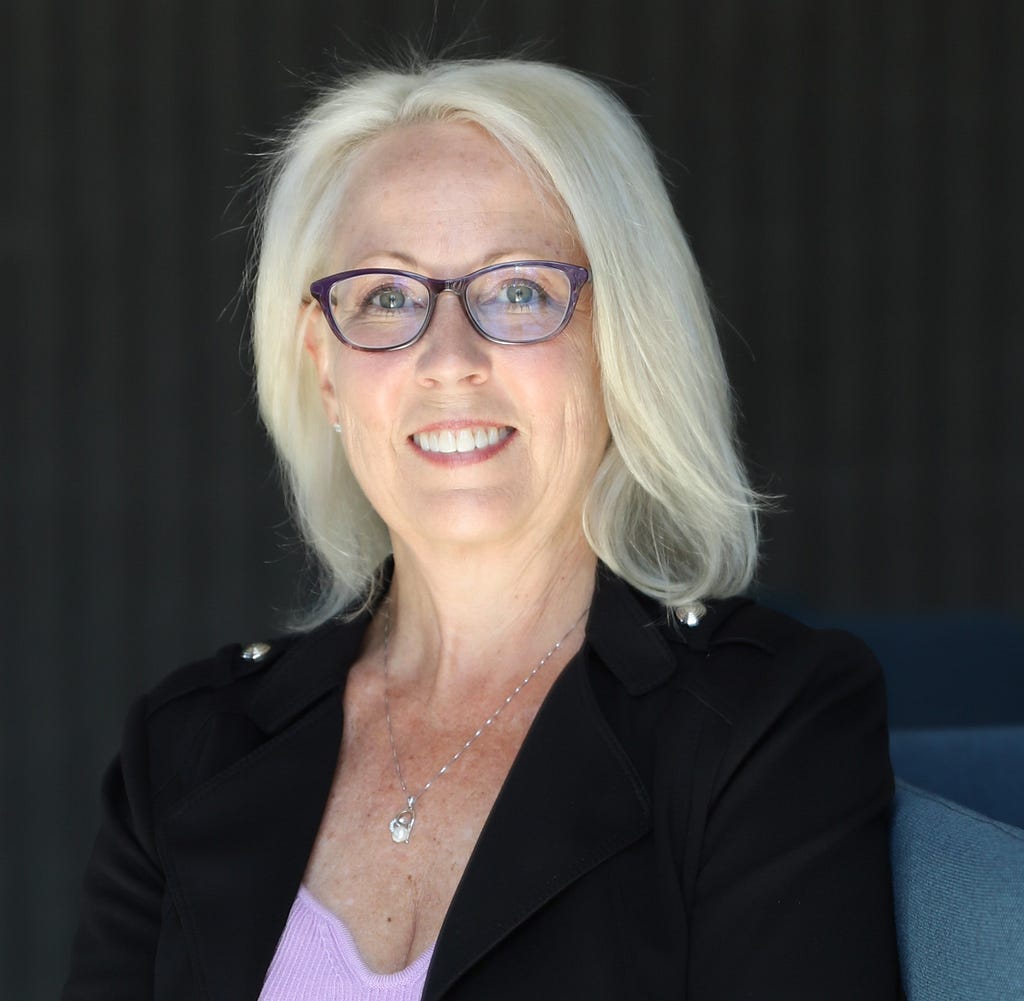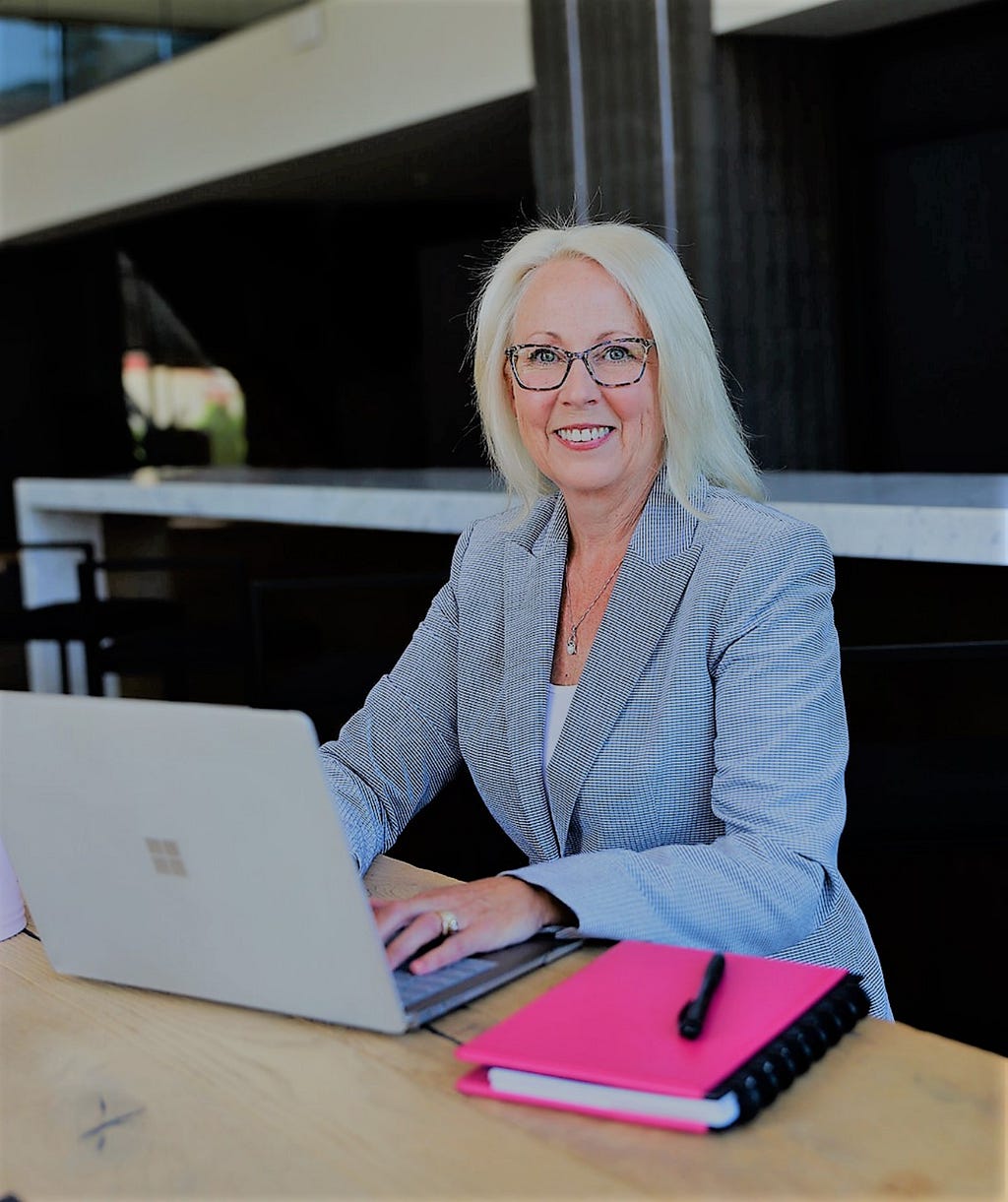
Spend time first thing in the morning to plan the day. Determine each day what your most important tasks are and ensure you have time scheduled to complete them. Look for things you can delegate or need to ask for help to complete and plan for those as well.
As a part of my series about “How to Slow Down To Do More” I had the pleasure to interview Angie Keeslar.
Angie Keeslar is a Leadership Development Specialist and President of Sharper Skills Leadership, LLC., a franchise of Leadership Management International (LMI). Angie has over 30 years leadership experience and an MS in Leadership from Grand Canyon University. She is enthusiastic about developing leaders and ensuring they have the skills necessary to build successful organizations.
Thank you so much for doing this interview with us! Can you tell us the “backstory” about what brought you to this specific career path?
According to a 2006 Pew Research Report report, 26% of women and 21% of men feel that they are “always rushed”. Has it always been this way? Can you give a few reasons regarding what you think causes this prevalent feeling of being rushed?
I know it was this way for my 35 years in the corporate world, and honestly, I am surprised the numbers are not higher. It comes down to a lack of clarity around strategic vision and an obsession for meetings, with no clear purpose. If leadership is not clear on the strategic vision, then everything becomes a priority, leading to bouncing back and forth between tasks without a focus on any of them. Everything cannot be top priority and consideration of impact is important prior to making a quick change. A second reason is the love of meetings. We have all sat through meetings that plan the next meeting, only leading to a meeting to recap the first. Exactly where were we going? Not having an agenda, ensuring the right people are at the table, and knowing the expected outcome leads to inefficient meetings. The lack of clear direction and too many meetings cause feelings of being rushed, moving from one thing to the next without a break.
Based on your experience or research can you explain why being rushed can harm our productivity, health, and happiness?
Many people feel they can successfully multi-task, working on several things at the same time. Really what is happening is the brain is switching between tasks and not fully recovering along the way. This leads to mistakes, frustration, and burnout. The lack of ability to focus, take time to do things right, and take a break when needed all impact productivity, health, and happiness. You need time to feel good about what you are doing, feel that you are doing a good job, and are accomplishing something each day are important to wellbeing.
On the flip side, can you give examples of how we can do more, and how our lives would improve if we could slow down?
Slowing down to do more comes down to key skills in goal setting and time management and scheduling time to do both properly. If the vision is clear, and steps planned out, staying focused and getting more accomplished with less rush will follow. Understanding what is important and being able to see what can be delegated or even eliminated allows for efficient use of time. Clarity allows for prioritization, which leads to getting more of the important work done without the rush and burnout.

We all live in a world with many deadlines and incessant demands for our time and attention. That inevitably makes us feel rushed. Can you share with our readers five strategies that you use to “slow down to do more”? Can you please give a story or example for each?
- Spend time first thing in the morning to plan the day. Determine each day what your most important tasks are and ensure you have time scheduled to complete them. Look for things you can delegate or need to ask for help to complete and plan for those as well.
- Limit interruptions when you are working on important tasks. People often think they must read an email or message as soon as it pops in. That email or slack message can wait 30 minutes while you complete what you are doing. It is the same for anyone popping in for non-urgent matters, let them know you are in the middle of something and will get back with them when done. Just be sure to do so to maintain trust.
- Manage Email communications. Make use of tools to sort emails by person or topic so email is streamlined for review. Ask others to put you on the “To” line if they need to respond and the “CC” if just for information. That also reduces time responding when the intent was only to inform.
- Be diligent when scheduling or accepting meetings. Ensure you need to be part of the discussion and request an agenda ahead of time. This will save time siting in unproductive meetings that could have been an email, or where your participation was not necessary.
- Close out each day and move outstanding important tasks not completed to the next day, ensure there is time scheduled as needed. Review upcoming meetings and decline any that do not have an agenda or where you are not needed and respond to any outstanding emails that require your attention.
How do you define “mindfulness”? Can you give an example or story?
I have not learned to practice mindfulness in the sense of using any tools or resources. I do enjoy exercising and find if I spend time at the end of each day exercising or stretching it helps me run through the day and put things in perspective. It is much easier to do that once you are away from your desk and can take time to think through the day. This also helps me to see what I could have done better, appreciate what went well, and see what needs added to the plan in the morning. A word of caution — its ok to think through it but not to dwell. It takes practice and discipline but is worth it.
Can you give examples of how people can integrate mindfulness into their everyday lives?
Movement, and getting away from your desk even for short breaks. This allows your mind to reset, and you can break up thought patterns that may have you stuck. This works whether you are in the workplace or working from a home space. Just step away for a few minutes.
Do you have any mindfulness tools that you find most helpful at work?
For me, getting some fresh air and a little exercise go a long way in resetting myself during the workday. Just taking a walk around the building can change my focus and I come back refreshed. Even in Arizona, I will go outside in the summer to get a few minutes to reset.
What are your favorite books, podcasts, or resources that inspire you to use mindfulness tools or practices?
I don’t have anything that I can point to, its just knowing what works for me and being disciplined to use it when needed.
Can you please give us your favorite “Life Lesson Quote”? Can you share how that was relevant to you in your life?
Many years ago, I went to an offsite meeting and heard John G. Miller talk about the QBQ “Question Behind the Question” and taking personal responsibility. This has stuck with me, asking how I can change things rather than “why me” or other victim thinking. To me, it comes down to “what can I do to make this better?” when things are not going as planned.
You are a person of great influence. If you could inspire a movement that would bring the most amount of good to the most amount of people, what would that be? You never know what your idea can trigger. 🙂
I see teaching effective goal-setting and time management skills in schools would be incredibly valuable to the future of our workforce. It is also impactful in the current workforce but getting to the younger workers before they start to feel the rush and burnout is important. Let’s help them learn from our mistakes and enter the workforce, or higher education, with the right foundation.
Thank you so much for these insights! This was so inspiring!
Angie Keeslar of Sharper Skills Leadership On How to Slow Down to Do More was originally published in Authority Magazine on Medium, where people are continuing the conversation by highlighting and responding to this story.
